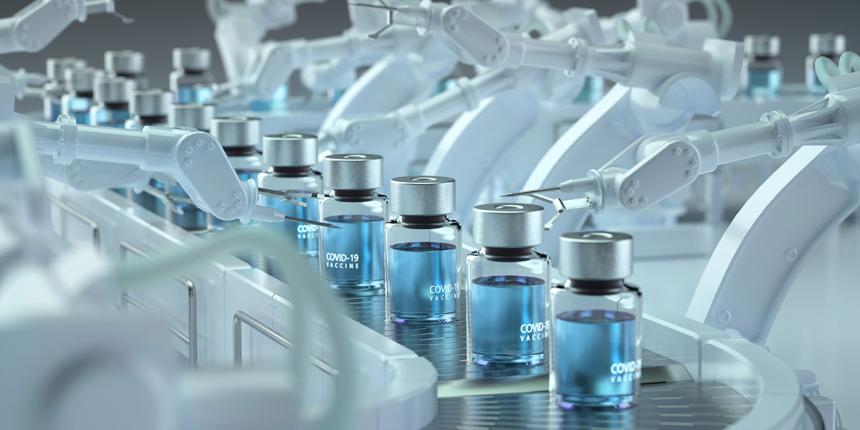Why We Need Another Type of Vaccine

It’s not been an easy rollout of the new coronavirus vaccines. From early December when the first vaccine was approved by the Food and Drug Administration for emergency use to now, fewer people have been vaccinated than hoped for. The criteria for who can get the vaccine has shifted. And states, who have largely been in charge of delivering the vaccines to providers are still having distribution issues.
To date, about 20 million people have received at least one dose of the coronavirus vaccine. It takes two doses of the current vaccines to be fully inoculated.
But things are looking up — and two new vaccines are on their way. Vaccines by Johnson & Johnson and AstraZeneca are currently in phase 3 trials, and if data from these trials are positive, both should apply soon for the same authorization that Pfizer and Moderna already have.
How do these other vaccines work?
Similar to the Moderna and Pfizer vaccines, vaccines from Johnson & Johnson and AstraZeneca use genetic instructions to teach cells how to grow the coronavirus’s spike protein. The body’s immune system sees this protein and learns to attack it. When it encounters the full coronavirus, its immune response kills the invader that causes COVID-19.
Where they differ from the current mRNA vaccines is in their delivery method. The Pfizer and Moderna vaccines use an oily shell that allows them to pass into cells. That oily shell is one of the reasons the vaccines have to be kept so cold. It can begin to break down at room temperature.
Johnson & Johnson’s and AstraZeneca’s vaccines use another virus to deliver the instructions and is much more stable at room temperatures. The virus Johnson & Johnson uses is a modified human adenovirus, which can enter the cells but is genetically altered so that it cannot replicate. Adenoviruses typically causes the common cold. But J&J’s version doesn’t cause sickness. J&J previously used this method for an Ebola vaccine that has been approved.
There are many adenoviruses that infect people on a daily basis. Scientists have been working to find one that is less common so that the immune system hasn’t encountered it before. If the immune system has seen the adenovirus before, the body could attack it, preventing it from delivering its cargo to the cell and making the vaccine less effective. That’s why the AstraZeneca vaccine uses a chimpanzee adenovirus to help mitigate this risk.
Once in the cell, the adenovirus invades the nucleus where the body’s DNA is stored. The DNA reads the gene for the coronavirus spike protein and the cell begins to create it. The immune system then recognizes the foreign cell structure and develops a response to it. Since the adenovirus used is modified, it will not be able to replicate and cause infection nor integrate with the human genome.
Both vaccines are more stable than the current vaccines and can be kept in a regular refrigerator for several months.
How effective are these vaccines?
We don’t know yet. Data should come out soon. Even if they have efficacy rates lower than Moderna and Pfizer vaccines, getting them to market is important.
Why do we need different types of COVID-19 vaccines?
There are four reasons we need coronavirus vaccines besides Moderna’s and Pfizer’s:
- Pfizer’s and Moderna’s vaccines are hard to transport and store. Vaccines from AstraZeneca and Johnson & Johnson are more stable and can survive in refrigerators that are common in primary care practices.
- There’s a limited supply of the initial vaccines. The U.S. initially ordered only 100 million doses each of the Pfizer and Moderna vaccines. It takes two doses to vaccinate someone. The country has since ordered an additional 100 million doses each, but they won’t be available for several months.
- They’re cheaper. Pfizer’s vaccine costs close to $20 a dose. Moderna’s costs more than $30 a dose. J&J’s is expected to cost around $10 a dose and AstraZeneca’s could be as little as $3 to $4 a dose. The U.S. government is picking up the tab for the vaccines’ costs.
- In particular, J&J’s vaccine might only require one dose. The company is simultaneously testing two- and one-dose approaches to vaccination. If it turns out that only one dose is needed, it reduces logistical hurdles to full inoculation.
When will Johnson & Johnson and AstraZeneca’s vaccines be approved?
J&J is expected to release results from its phase 3 vaccine trial soon, and apply shortly after for an emergency use authorization, similar to what Moderna and Pfizer did.
AstraZeneca’s EUA request might come later – as late as April, if reports linked to outgoing administration officials are true.
Still, with two new vaccines and additional doses of Moderna and Pfizer vaccines coming online in the second quarter of 2021, there may be plenty of doses available to start mass vaccinations in this country by June.
Let’s all keep our fingers crossed that it happens.


